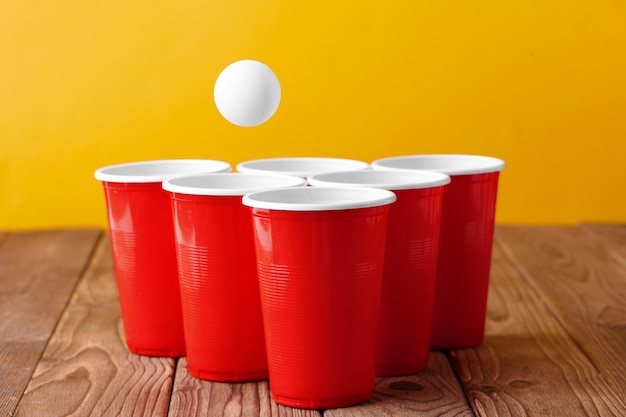How Big Is a Pint? Unraveling the Surprising Variations of a Classic Measure

The pint: a humble unit of measurement that evokes cozy pubs, frosty beer glasses, and creamy scoops of ice cream. Yet, despite its ubiquity, confusion abounds. Order a pint in London, and you’ll get a generous pour; request one in New York, and you’ll receive something smaller. This discrepancy isn’t a trick—it’s history and geography colliding. The pint’s size hinges on whether you’re holding an Imperial pint rooted in British tradition or a U.S. pint shaped by American standardization. Beyond beverages, the pint quietly governs recipes, fuel efficiency, and market regulations worldwide. This article dives into the pint’s dual identity, its historical evolution, and its modern-day implications, revealing why this unit is far more complex—and fascinating—than it appears.
The Imperial Pint: Britain’s Liquid Legacy
The Imperial pint reigns across the United Kingdom, Ireland, Canada, and other Commonwealth nations, defined as 20 fluid ounces. Established by the British Weights and Measures Act of 1824, it standardized volumes previously mired in regional inconsistencies. Crucially, one Imperial pint equals 568 milliliters, a benchmark enforced in pubs to ensure fair serving sizes. This measure isn’t merely about beer—it’s embedded in cultural rituals. The “pint glass” design, with its slight taper, accommodates a perfect head of foam, while British milk often comes in pint-based bottles. Legal mandates require pubs to display “PINT” certifications on glasses, assuring patrons they receive the full 20 ounces. The Imperial pint’s endurance reflects a commitment to tradition, even as metrication advances elsewhere.
The U.S. Pint: America’s Customary Counterpart
Across the Atlantic, the U.S. pint follows its own rules, fixed at 16 fluid ounces or 473 milliliters—nearly 20% smaller than its Imperial cousin. This divergence stems from the U.S. Customary System, which adapted British units post-independence but discarded the Imperial reforms of 1824. In daily life, this pint appears in grocery stores (think pint-sized ice cream containers), bars (where 16-ounce pours dominate), and recipes. Notably, the U.S. pint splits into two cups, each holding 8 ounces, simplifying smaller measurements. While the metric system influences science and industry, the U.S. pint persists in consumer spaces, creating transatlantic misunderstandings. Order a pint in a Chicago pub, and you’ll get 473 ml; in Toronto, just 100 miles north, it balloons to 568 ml—a stark contrast with real-world consequences for travelers and traders.
Pints Beyond Beer: Culinary and Commercial Applications
Though beer steins dominate the pint’s image, its influence spans kitchens, markets, and farms. In cooking, U.S. recipes often call for pints of berries or broth, equating to 2 cups. Dairy illustrates the divide vividly: a U.K. “pint of milk” delivers 568 ml, while U.S. cartons hold 473 ml. Ice cream highlights this further—a U.S. pint tub contains 16 ounces, yet shrinkflation has led some brands to covertly reduce sizes. Meanwhile, agricultural sectors use pints per acre to measure crop yields or pesticide coverage. Even automotive fluids, like windshield washer solution, may be sold in pint bottles. This versatility underscores the pint’s dual role: a vessel of conviviality and a precise (or deceptive) commercial tool.
Global Variations: Where the Pint Fits in a Metric World
Nations without British or American ties often sidestep pints entirely. Australia and New Zealand technically retain the Imperial pint for beer but use metric labeling (e.g., “570 ml” on glasses). In Europe, metric units dominate, though Irish pubs honor the Imperial tradition. Japan blends cultures—”pint glasses” hold 16 U.S. ounces but are marketed as “large” pours. South Africa abandoned pints in 1970, replacing them with liters. This patchwork reflects broader tensions: the pint persists where tradition fuels commerce (like pubs), but metrication erodes its formal use. Even within pint-using countries, hybrid labeling emerges—U.K. supermarkets list milk in both pints and liters—catering to nostalgia while complying with EU-inspired rules.
Measuring and Converting Pints: A Practical Guide
Accurately converting pints demands attention to origin. Use these core formulas:
-
1 Imperial pint = 20 fl oz ≈ 568 ml
-
1 U.S. pint = 16 fl oz ≈ 473 ml
For cooking, remember 2 U.S. pints make a quart (32 oz), while 1.2 U.S. pints equal 1 Imperial pint. When scaling recipes, a British “pint of cream” requires ~20% more volume than its American counterpart. Digital kitchen scales resolve ambiguity—weighing liquids (1 U.S. pint of water = ~473 grams) avoids errors. In professional contexts, precision matters: breweries calibrate tanks in liters, then convert to pints for consumer menus. Always verify measuring cups—U.S. sets label pints (16 oz), but international sets may default to metric or Imperial.
Legal Implications: Pints as Units of Fair Trade
Governments enforce pint standards to protect consumers. In the U.K., the Weights and Measures Act mandates stamped “PINT” glasses, with fines for short pours. The U.S. National Institute of Standards and Technology (NIST) certifies pint measures for commerce, though ice cream’s “pint” is loosely enforced, leading to underfilled containers. Draft beer regulations vary: Massachusetts requires 16-ounce pints, but other states allow smaller “pints” if menus specify volume. These laws highlight the pint’s role beyond measurement—it’s a symbol of transparency. Yet gaps remain, urging vigilance among buyers.
Conclusion
The pint, a unit steeped in heritage and contradiction, defies a singular definition. Its size dances between nations—20 ounces in a London pub, 16 in a Los Angeles bar—each iteration telling a story of cultural identity and standardization battles. While metric units gradually unify global measurements, the pint endures where tradition and taste converge, from frothy ales to summer ice cream. Understanding its variations isn’t pedantry; it’s key to navigating commerce, recipes, and even travel. So next time you raise a pint glass, consider the centuries of history in your hand—and the precise volume you’re about to enjoy.
Frequently Asked Questions (FAQs)
Q: Why are U.S. and U.K. pints different sizes?
A: The split traces to 1824, when Britain standardized the Imperial system (20 oz/pint). The U.S., having established its Customary System earlier, retained the older English wine gallon (128 oz), dividing it into eight 16-ounce pints. Independence meant no obligation to adopt Britain’s updates.
Q: Is a pint of ice cream really a pint?
A: In the U.S., legally yes—but only by name. While labeled “pint,” ice cream containers must hold at least 16 fluid ounces, yet weight varies by density. Some brands exploit this, filling to the minimum while reducing quality. Imperial-pint countries sell ice cream in 568 ml packs.
Q: Do other countries use pints besides the U.S. and U.K.?
A: Selectively. Ireland and Canada use Imperial pints for beer; Australia and New Zealand use metric equivalents (e.g., 570 ml) but call them “pints” colloquially. Most metric nations (Germany, Japan) avoid pints entirely.
Q: How can I avoid confusion when a recipe calls for a pint?
A: Check the recipe’s origin: British/Irish sources likely mean 568 ml (≈2.4 U.S. cups), while American ones mean 473 ml (2 cups). When in doubt, use a measuring cup with fluid ounce markings or weigh liquids (1 U.S. pint water = 473 grams).
Q: Are pint glasses legally regulated?
A: Yes. In the U.K., pub glasses must be Crown-stamped to certify 20 oz capacity. U.S. states vary: some mandate 16-ounce pints for beer, while others allow smaller pours if labeled by volume (e.g., “14 oz pint”). Always check local laws!



